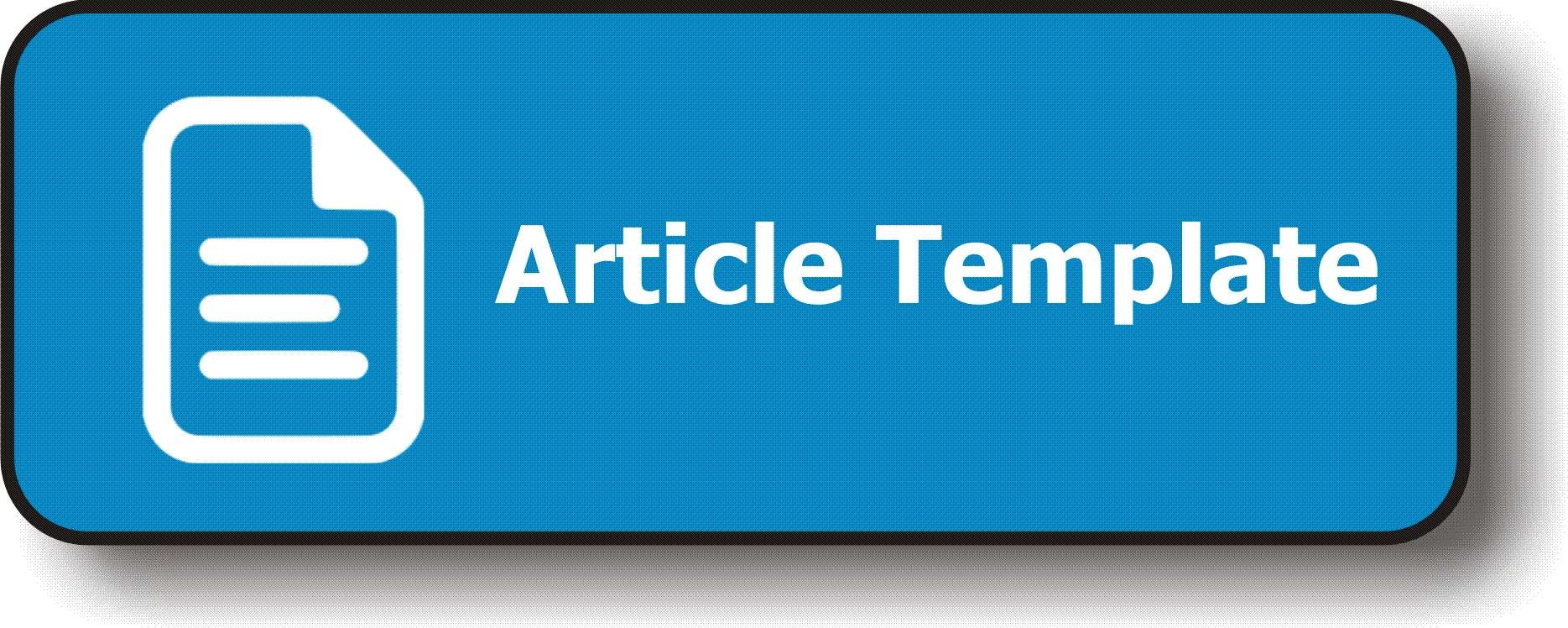Correlation between Science and Education Lecturers’ Perceived Use of Google Classroom for Instruction
Abstract
Keywords
Full Text:
PDFReferences
Acevedo-Borrega, J., Valverde-Berrocoso, J., & Garrido-Arroyo, M. D. C. (2022). Computational thinking and educational technology: A scoping review of literature. Education Sciences, 12(1), 39. https://doi.org/10.3390/educsci12010039
Agah, J., Ogbeche, T. & Okorie, U. (2016). Computer anxiety, operation skills, and attitude as correlates of students preparedness for computer based assessment. International Journal of Education and Research, 4(2), 71-80.
Akdeniz, C. (2016). Instructional process and concepts in theory and practice. Singapore: Springer Singapore.
Alim, N., Linda, W., Gunawan, F., & Saad, M. S. M. (2019). The effectiveness of google classroom as an instructional media: a case of state islamic institute of Kendari, Indonesia. Humanities & Social Sciences Reviews, 7(2), 240-246. https://doi.org/10.18510/hssr.2019.7227
Asika, E. R., Chitom, J. A. R., & Chelichi, I. F. (2017). Appraisal of human resource accounting on profitability of corporate organization. Economics, 6(1), 1-10. https;//doi.org/ 10.11648/j.eco.20170601.11
Ballew, T. D. (2017). Teacher perceptions of a technology-based google classroom. USA: Carson-Newman University.
Bayarmaa, N., & Lee, K. (2018). A study on the application of Google Classroom for problem-based learning. Journal of the Korea Academia-Industrial Cooperation Society, 19(7), 81-87. Httos://doi.ord/10.5762/KAIS.2018.19.7.81
Cooke, P. (2013). Global production networks and global innovation networks: Stability versus growth. European Planning Studies, 21(7), 1081-1094. https://doi.org/10.1080/09654313.2013.733854
Dawot, N. I. M., & Ibrahim, R. (2014, September). A review of features and functional building blocks of social media. Malaysian Software Engineering Conference (MySEC) (pp. 177-182). IEEE.
Fake, H., & Dabbagh, N. (2020). Personalized learning within online workforce learning environments: exploring implementations, obstacles, opportunities, and perspectives of workforce leaders. Technology, Knowledge and Learning, 25(4), 789-809. https://doi.org/10.1088/1742-6596/1175/1/012153
Iftakhar, S. (2016). Google classroom: what works and how. Journal of Education and Social Sciences, 3(1), 12-18.
Izenstark, A., & Leahy, K. L. (2015). Google classroom for librarians: features and opportunities. Library Hi Tech News. 32(9), 1-3. https://doi.org/10.1108/LHTN-05-2015-0039
Kebritchi, M., Lipschuetz, A., & Santiague, L. (2017). Issues and challenges for teaching successful online courses in higher education: A literature review. Journal of Educational Technology Systems, 46(1), 4-29. https://doi.org/10.1177/0047239516661713
Kevin, F., (2019). Technology Report to the Raymond School Board.
Machado, L. J., & Chung, C. J. (2015). Integrating Technology: The Principals' Role and Effect. International Education Studies, 8(5), 43-53. https://doi.org/10.5539/ies.v8n5p43
Martin, F., & Parker, M. A. (2014). Use of synchronous virtual classrooms: Why, who, and how. MERLOT Journal of Online Learning and Teaching, 10(2), 192-210.
Mohd Shaharanee, I. N., Jamil, J., & Mohamad Rodzi, S. S. (2016). The application of Google Classroom as a tool for teaching and learning. Journal of Telecommunication, Electronic and Computer Engineering, 8(10), 5-8.
Nagoba, B. S., Mantri, S. B. (2015). Role of teachers in quality enhancement in higher education. Journal of Krishna Institute of Medical Sciences University 4(1), 177-182.
O’Callaghan, F. V., Neumann, D. L., Jones, L., & Creed, P. A. (2017). The use of lecture recordings in higher education: A review of institutional, student, and lecturer issues. Education and Information Technologies, 22(1), 399-415. https://doi.org/10.1007/s10639-015-9451-z
Okmawati, M. (2020). The use of Google Classroom during pandemic. Journal of English Language Teaching, 9(2), 438-443. https://doi.org/10.24036/jelt.v9i2.109293
Olumorin, C. O., Babalola, E. O., Ashaolu, S., & Omolafe, E. V. (2022). Students ‘attitude towards the utilization of google classroom for learning. Indonesian Journal of Educational Research and Technology, 2(3), 213-222. https://doi.org/10.17509/ijert.v2i3.44828
Rahmad, R., Wirda, M. A., Berutu, N., Lumbantoruan, W., & Sintong, M. (2019). Google classroom implementation in Indonesian higher education. In Journal of Physics: Conference Series (Vol. 1175, No. 1, p. 012153). IOP Publishing. https/doi.org/10.1088/1742-6596/1175/1/012153
Rahmawati, B. F. (2020). Learning by google classroom in students’ perception. In Journal of Physics: Conference Series (Vol. 1539, No. 1, p. 012048). IOP Publishing. https://doi.org/10.1088/1742-6596/1539/1/012048
Roehl, A., Reddy, S. L., & Shannon, G. J. (2013). The flipped classroom: An opportunity to engage millennial students through active learning strategies. Journal of Family & Consumer Sciences, 105(2), 44-49.
Saini, D. K., & Al-Mamri, M. R. S. (2019). Investigation of technological tools used in education system in oman. Social Sciences & Humanities Open, 1(1), 100003. https://doi.org/10.1016/j.ssaho.2019.100003
Samarasekera, D. D., Gwee, M. C., Long, A., & Lock, B. (2018). Lectures and large groups. Understanding Medical Education: Evidence, Theory, and Practice, 111-121.
Scanlon, E. (2021). Educational technology research: Contexts, complexity and challenges. Journal of Interactive Media in Education, 2021(1). https://doi.org/10.5334/jime.580
Shelvam, H. ., Jayarajah, K. ., Kandasamy, S., Xiao, S., Durairaj, Y. ., Singh, C. K. S., & Maniam, M. . (2021). An investigation on the learners’ perceptions and experiences in engaging with online writing lessons conducted via Google Classroom. International Journal of Asian Social Science, 12(1), 13–25. https://doi.org/10.18488/5007.v12i1.4389
Suwantarathip, O., & Wichadee, S. (2014). The effects of collaborative writing activity using Google Docs on students' writing abilities. Turkish Online Journal of Educational Technology-TOJET, 13(2), 148-156.
Triana, M., Herman, H., Sinurat, B., & Silalahi, D. E. (2021). An analysis of students perception on the use of Google Classroom in english language learning. Cetta: Jurnal Ilmu Pendidikan, 4(3), 607-618. https://doi.org/10.37329/cetta.v4i3.1474
Westberry, N., McNaughton, S., Billot, J., & Gaeta, H. (2015). Resituation or resistance? Higher education teachers’ adaptations to technological change. Technology, Pedagogy and Education, 24(1), 101-116.
DOI: https://doi.org/10.17509/edulib.v12i1.40443
DOI (PDF): https://doi.org/10.17509/edulib.v12i1.40443.g27432
Refbacks
- There are currently no refbacks.
Copyright (c) 2022 Edulib

This work is licensed under a Creative Commons Attribution-NonCommercial-ShareAlike 4.0 International License.

This work is licensed under a Creative Commons Attribution-ShareAlike 4.0 International License.





